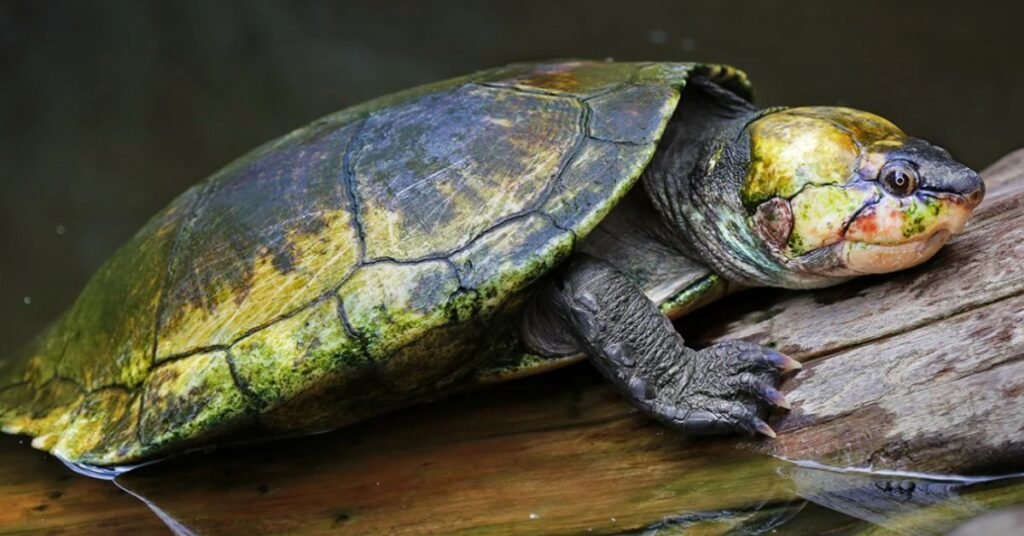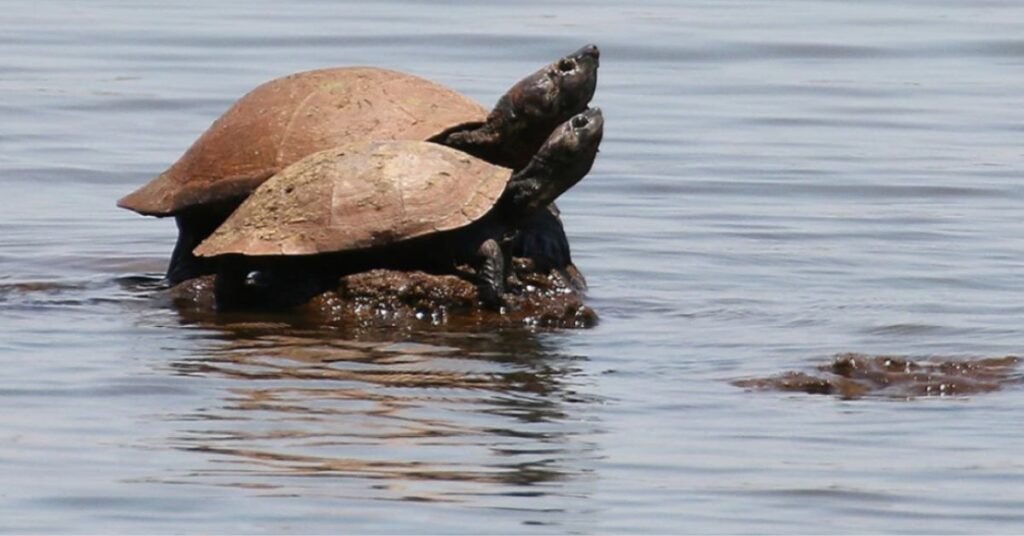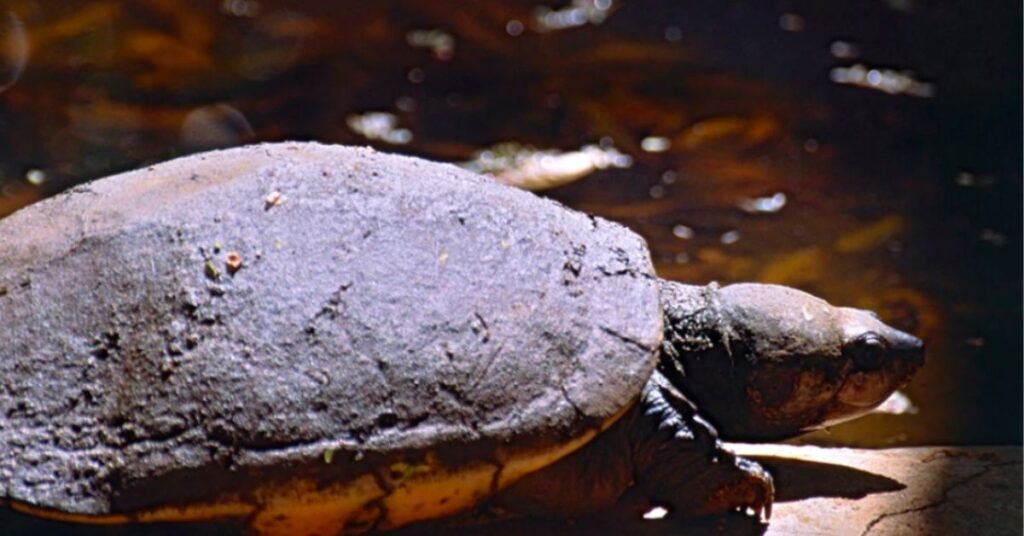Among 356 turtle species, the Madagascar big-headed turtle is one of the most endangered. Both natural predators and human activities threaten the Madagascar big-headed turtle. Having said that, the question arises for this turtle species: “What are the Madagascar big headed turtle predators?” With its distinctive large head, it might seem like this turtle could hold its own against any predator.
But the truth is, even these tough-looking reptiles have their own set of enemies. From wild predators to humans, Madagascar’s big-headed turtles face risks. Due to their size, adults are at less risk of predators. This post will dive into this topic and its whereabouts. What are the Madagascar big-headed turtle predators?
Table of Contents
What are The Madagascar Big headed Turtle Predators?

Madagascar big-headed turtles are the most threatened turtle species. Young Madagascar turtles are at risk from crocodiles and large fish, while birds and small mammals eat their eggs. Besides this predator risk, their habit loss for human activities is one of the most significant reasons for big-headed turtles to be endangered.
Madagascar big-headed turtles are top-priority reptiles on the edge of Existence because of their ancient origins and threatened status. A 2018 review listed this species as the most endangered turtle worldwide, and it is critically threatened.
The Madagascar Big Headed Turtle Overview

Before discussing these endangered turtle species predator facts, let’s learn the basics about the Madagascar big-headed turtle.
Description and Habitat
The Madagascar big-headed turtle (Erymnochelys Madagascariensis) lives in the slow-flowing rivers and wetlands of western Madagascar. In these areas, these semi-aquatic turtles can find food and nesting sites, as well as a mix of land and water.
Distinctive Physical Features
- Large Head: True to its name, the Madagascar big-headed turtle has a notably large head compared to its body. This feature helps it catch prey and navigate through muddy waters.
- Shell Coloration: The shell of this turtle is dark brown, which helps it blend into its surroundings. For this, they get some protection from predators. Several individuals of the big-headed turtle species have yellow-golden shells, adding to their unique appearance.
- Size: Adult turtles typically measure around 30 to 40 centimeters in length, so they are generally medium-sized turtles. Their size and coloration help them stay camouflaged in their natural habitat.
Habitat Specifics
As we already mentioned, these turtles are primarily found in western Madagascar’s wetlands, rivers, and streams. They prefer areas with slow-moving water, where the current is gentle enough for them to swim and forage comfortably. Dense vegetation and muddy bottoms are important for them, as they provide shelter and food.
Adaptations
The Madagascar big-headed turtle has webbed feet, so it can swim well in its aquatic environment. Its large, flat head is well-suited to digging into the mud to find food, such as small fish, insects, and plant material.
Natural Predators For Madagascar Big-Headed Turtle

Madagascar turtles are both at risk of natural predators and humans. Let’s first see what are their natural predator threats:
Egg Predators
Birds
Birds such as herons and egrets are significant predators of Madagascar’s big-headed turtle eggs. These birds are commonly found in the same wetland habitats as Madagascar turtles.
With their sharp beaks, they break into nests and eat the big-headed turtles’ eggs. As an example, herons have opportunistic feeding habits and can spot turtle nests from above.
Small Mammals
Small mammals, including rats and mongooses, threaten Madagascar turtle eggs. It’s especially easy for mongooses (introduced species in Madagascar) to find nests and raid them.
They use their sharp claws to dig eggs up and their keen sense of smell to find them. This predation is a real problem since big-headed turtles’ birth rate is low, reducing the number of hatchlings that can grow up.
Juvenile and Adult Predators
Crocodiles and Large Fish
Madagascar big-headed turtles face many threats from aquatic predators. Crocodiles, which live in the same river systems, are powerful predators that can eat young big-headed turtles. Large fish, such as catfish, also prey on juvenile turtles. These fish have strong jaws and are capable of swallowing young turtles whole.
Adult Turtles
Their large size and tough shells protect Madagascar big-headed turtles, but they can still get eaten. Large crocodiles, which share their habitat, can still pose a threat. These crocodiles can crush turtle shells with their powerful jaws. Even with their defenses, adult turtles have to be vigilant against such formidable predators.
Human-Induced Threats For Madagascar Big-Headed Turtle
Human activities are significantly responsible for the threat to these turtle species.
Habitat Destruction
Madagascar has one of the highest deforestation rates in the world, losing approximately 1-2% of its forest cover annually. Rapid deforestation is destroying Madagascar big-headed turtles’ natural habitats, like rivers and wetlands. As habitat fragmentation gets worse, it’s becoming harder for Madagascar turtles to find mates and food.
These turtles used to have a big home, around 20,000 km2. But now they occupy only a small part of it (around 500 km2).
Illegal Wildlife Trade
The illegal wildlife trade is another major threat to the Madagascar big-headed turtle created by humans. Due to their unique appearance, thousands of these turtles are captured and sold yearly despite CITES Appendix II protections.
This trade not only reduces wild populations but also disrupts the natural balance of their ecosystems. In many places, wildlife protection laws don’t get enforced, so the trade continues unchecked.
A Global Warming Crisis
Climate change affects the Madagascar big-headed turtle in several ways. Climate change is creating harmful effects on these turtles’ reproductive. Turtles’ reproductive process (the process that determines gender) depends on temperature.
Warmer temperatures can change how many male or female babies they have, which can cause problems for the whole turtle family down the line. Additionally, changes in rainfall patterns can affect nesting sites and food availability. For example, altered precipitation can lead to the drying up of wetlands, which are crucial for turtles’ survival.
Conservation Efforts For Big-headed Turtle
- Listing in CITES Appendix II: The Madagascar big-headed turtle is listed in CITES Appendix II. It means that international trade in these turtles is regulated to ensure their survival. It helps control the trade and prevent over-exploitation, so exporting turtles without permits is illegal.
- Captive Breeding: There are captive breeding programs for Madagascar big-headed turtles. These programs aim to boost their population numbers and eventually reintroduce them to the wild. Captive breeding helps ensure a healthy population of Madagascar big-headed turtle.
- Habitat Protection: Many efforts are being made to protect these turtle habitats. This includes creating and maintaining protected areas for turtles so they can live without habitat destruction.
- Community Education: It’s essential to get the word out about the Madagascar big-headed turtle’s situation. These programs teach local communities about protecting endangered turtles and their habitats.
Challenges to Conservation
- Populations Outside Protected Areas: Most Madagascar big-headed turtles live outside protected areas, so they’re more vulnerable. If they don’t get strict protection, they’re more likely to get poached or have their habitats destroyed.
- Need for Increased Enforcement: There is a critical need for better law and regulation enforcement to save Madagascar’s big-headed turtles. It includes patrolling areas to prevent illegal hunting and ensuring protected areas are not violated. To save the Madagascar big-headed turtle, law enforcement and conservation initiatives need to get stronger.
Read More: Is The Madagascar Big Headed Turtle Venomous?
Conclusion
While big-headed turtles might look tough with their large heads, they’re actually pretty vulnerable. Crocodiles, snakes, and even some hungry birds see these turtles as a tasty treat. It’s a tough life for this reptile species.
But the most significant threats they face aren’t from other animals – it’s us humans. The most damage is caused by habitat loss and the illegal pet trade. We should work together to protect this unique creature and its home.
